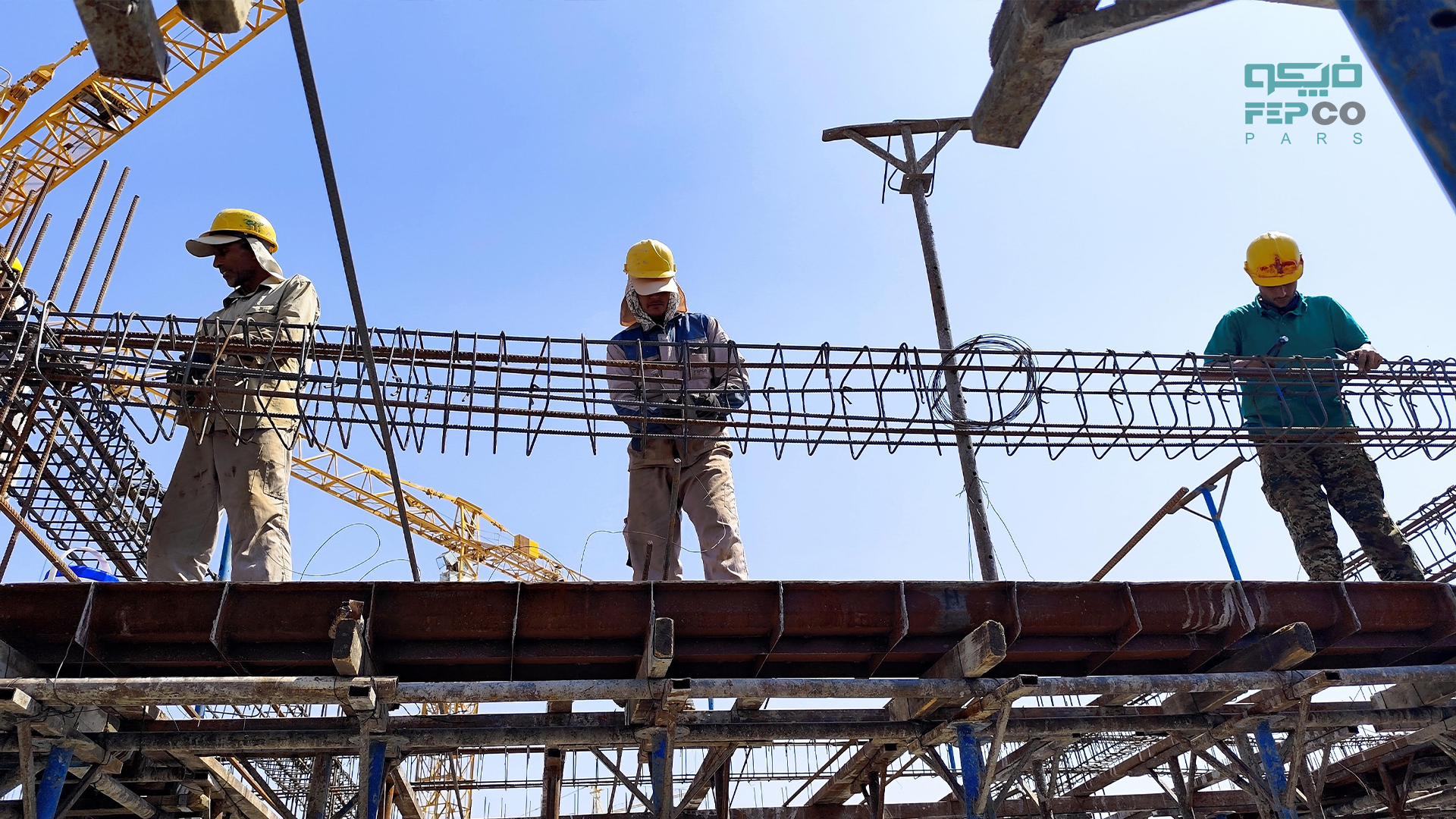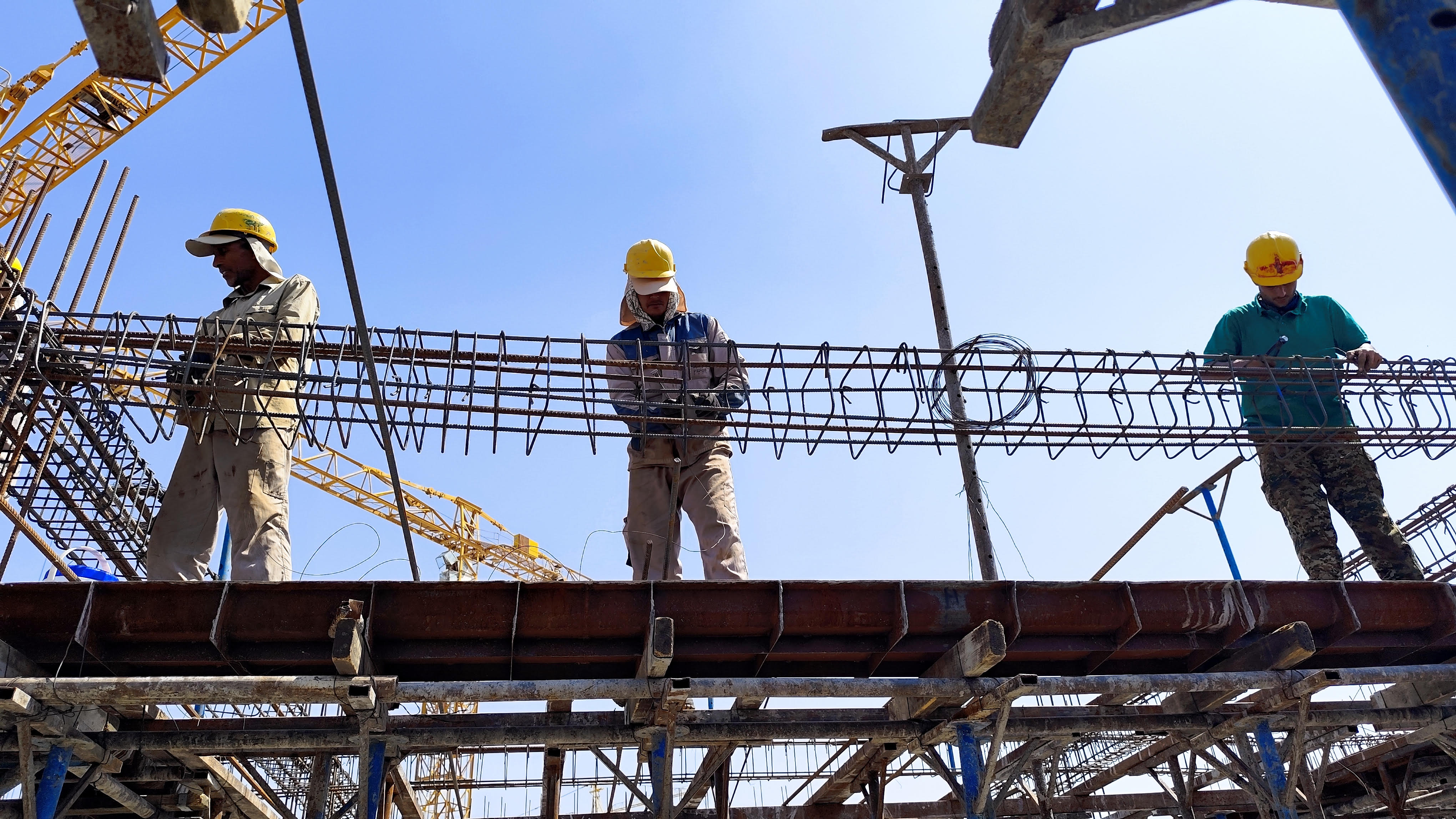The company “Fepco ( Saman Mechanic Energy Farayand Pars )” has consistently strived, leveraging its extensive experience and knowledge in the fields of construction and project management, to take a significant step towards improving construction processes and developing large-scale projects by offering innovative and effective solutions. To this end, the company’s research and development unit decided to conduct a comprehensive and practical study on this subject.

This article serves as a reliable and comprehensive resource that can assist project managers, contractors, and other industry professionals in construction to achieve better outcomes in their projects by utilizing existing experiences and knowledge. Our primary goal at Fepco is to enhance quality and efficiency in the construction industry through strategic partnerships and the adoption of innovative solutions.
What is Construction Partnership, and How Does It Help Achieve Larger Projects?
Construction partnership refers to the collaboration between two or more parties, such as contractors, investors, architects, and engineers, to carry out a construction project. These partnerships can take various forms, including Joint Ventures, Partnering Agreements, or even strategic partnerships aimed at achieving shared goals.
In these collaborations, each party contributes its resources, knowledge, and skills to jointly achieve the project’s objectives. These resources can include financial investment, workforce, technical expertise, and networking connections. The primary goal of construction partnerships is to improve efficiency, reduce risks, increase productivity, and enable the completion of projects that might be beyond the capability of a single entity.
How Does Construction Partnership Help Achieve Larger Projects?
1. Pooling Resources and Capabilities:
One of the biggest advantages of construction partnerships is the ability to pool diverse resources and capabilities. Each partner can provide a portion of the financial investment, technical expertise, or workforce, making it easier to execute larger and more complex projects that might exceed the capacity of a single company or organization.
2.Risk Sharing:
Large projects carry significant financial, technical, and time-related risks. Through construction partnerships, these risks are shared among the partners, reducing the financial burden on any one entity and increasing confidence in the project’s success.
3.Access to Wider Networks:
Different partners in a project often have access to diverse networks and business relationships. This can help in accessing new opportunities, suppliers, and markets, ultimately leading to the realization of larger projects.
4.Innovation and Productivity Improvement:
Collaboration among partners often leads to the exchange of knowledge and innovative ideas. These innovations can improve construction processes, reduce costs, and enhance the quality of the project.
5.Better Project Management:
With multiple partners bringing their expertise, project management becomes more effective. This improved management can enhance project timelines and prevent costly delays.
6. Increased Competitive Advantage:
In competitive markets, partnering with others can help companies bid more effectively for large contracts. This not only increases the likelihood of securing larger projects but also strengthens the company’s position against competitors.
Overall, construction partnerships enable companies and organizations to combine their resources and capabilities, successfully execute larger and more complex projects, increase productivity, and reduce risks.
The Impact of Construction Partnerships on Costs and Scheduling of Large Projects

Construction partnerships can have significant and substantial impacts on the costs and scheduling of large projects. These impacts can be both positive and negative, but with proper management and the right selection of partners, the benefits of such collaborations can be leveraged to optimize project costs and timelines.
Impact on Costs:
1.Cost Reduction through Resource Sharing:
– Construction partnerships allow companies to share resources, including equipment, workforce, and technology. This resource sharing can help reduce the overall project costs as capital and operational expenses are distributed among the partners.
2.Economies of Scale:
– Collaborating with multiple companies or entities can lead to economies of scale, meaning the cost per unit decreases as the volume of production or services increases. For example, purchasing raw materials jointly in large quantities can lead to lower prices and discounts from suppliers.
3. Reduction of Financial Risks and Sharing of Unexpected Costs:
– In large projects, financial risks are shared among the partners. This risk-sharing can prevent or mitigate unexpected costs since each partner is only responsible for a portion of the expenses.
4.Improved Financial Management and Increased Transparency:
– In large projects, partnerships can enhance financial management and increase cost transparency. With multiple partners overseeing expenses, the likelihood of resource wastage and unnecessary cost escalations is reduced.
Impact on Scheduling:
1.Improved Scheduling through Work and Expertise Division:
– One of the main advantages of construction partnerships is the ability to divide work according to the expertise of the partners. Each partner can focus on the aspect of the project where they have the most expertise, potentially reducing project completion time and achieving more precise scheduling.

2.Increased Efficiency and Productivity:
– By combining capabilities and utilizing best practices, partnerships can lead to increased efficiency and productivity. This boost in productivity can reduce the time required to complete tasks, allowing the project to be finished in a shorter timeframe.
3.Reduction of Delays through Risk Management:
– Sharing time-related risks among partners and developing more accurate timelines can help reduce project delays. Each partner, being accountable for a specific part of the project, can work to prevent potential delays.
4.Accelerated Decision-Making Process:
– Strong, well-structured partnerships can accelerate the decision-making process. With multiple partners working in a coordinated and focused manner, key decisions can be made more quickly, preventing delays caused by slow decision-making.
5.Synchronization of Activities:
– With multiple partners, synchronizing activities to achieve more precise scheduling is essential. This synchronization allows partners to perform tasks simultaneously and without interference, which can reduce the overall project time.
Challenges and Potential Issues:
– Coordination Among Partners:
– One of the significant challenges in partnerships is the need for coordination among partners. Lack of coordination can lead to delays and increased costs.
– Conflicts Among Partners:
– In case of conflicts, the project might face stoppages or unexpected delays, which can lead to increased costs.
– Increased Project Management Complexity:
– Partnerships involving multiple partners can lead to increased project management complexity, requiring additional time and resources.
In summary, construction partnerships, when properly managed, can lead to cost reductions and improved scheduling for large projects. However, the success of such collaborations depends on the correct selection of partners, the division of tasks and responsibilities, and the creation of effective mechanisms for risk management and coordination among the partners.
Conclusion
The Research and Development unit of “Fepco ( Saman Mechanic Energy Farayand Pars )” has conducted a comprehensive and analytical study on construction partnerships, concluding that this approach can be one of the best solutions for achieving larger and better projects in the construction industry. Construction partnerships not only facilitate project development but also enable the effective management of complex and large-scale projects with higher efficiency and reduced risks.
The study found that joint investment and resource sharing among partners can lead to cost reduction and accelerated project timelines. This approach, particularly in large projects, enables the pooling of capabilities and expertise, helping projects to be completed more efficiently and in a shorter timeframe. The role of construction engineers and contractors is crucial in the success of these partnerships, as their expertise and experience can lead to improved quality and enhanced execution processes.
As an innovative solution for larger projects, construction partnerships offer numerous benefits, including sustainable development through collaborative efforts and reduced project risks. This not only results in cost savings and increased productivity but also opens new opportunities for the development of complex and larger projects.
To this end, the best practices for construction partnerships should include the formulation of shared strategies, improvement of coordination processes, and the use of innovative solutions in project development. Additionally, attention to the challenges and opportunities in construction partnerships and their impact on project costs and timelines is of critical importance.
Ultimately, this article emphasizes that for success in large projects, the correct selection of partners, effective resource and risk management, and a focus on efficiency and innovation in construction development are essential. By adopting these strategies and collaborative approaches, Fepco can not only succeed in large projects but also strengthen its position as a leader in the construction industry.
Frequently Asked Questions
1.What is a construction partnership, and how does it help with larger projects?
A construction partnership refers to the collaboration between multiple companies or entities to execute a construction project. This type of cooperation allows for the sharing of financial resources, technical expertise, and workforce, leading to reduced costs, improved efficiency, and enhanced capability to undertake larger and more complex projects.
2. What are the benefits of partnering in construction projects?
Partnerships in construction projects can lead to risk sharing, cost reduction, improved quality and efficiency, and accelerated project timelines. Additionally, these collaborations provide access to broader resources and networks, which can contribute to the greater success of the projects.
3.How can we choose the best partner for a construction partnership?
Selecting the best partner requires a thorough assessment of their expertise, experience, financial resources, and project management capabilities. Alignment of strategic goals and organizational culture between partners is also crucial. Lastly, appropriate legal and contractual agreements are necessary to clearly define each partner’s responsibilities and rights.
4. Can construction partnerships help reduce project costs?
Yes, construction partnerships can help reduce project costs by sharing resources, achieving economies of scale, and distributing risks. This is particularly effective in large and complex projects that typically have high costs.
5.What types of projects are suitable for construction partnerships?
Large and complex projects, such as infrastructure development, high-rise construction, and heavy engineering projects, are particularly well-suited for construction partnerships due to their need for substantial resources and diverse expertise. These projects often require a combination of various capabilities, which can be achieved through partnerships.
6.How do construction partnerships impact project timelines?
Construction partnerships can improve project timelines by enabling the division of labor and expertise among partners. This division can expedite project execution and reduce delays. Additionally, synchronizing activities among partners can help ensure tasks are completed within the planned schedule.
7.What are the main challenges of construction partnerships, and how can they be managed?
The main challenges include coordination among partners, contractual disputes, and management complexities. These challenges can be managed by establishing effective communication and coordination mechanisms, drafting clear contracts, and creating a cohesive project management system.
8.How can we increase project efficiency through construction partnerships?
Project efficiency can be enhanced by selecting the right partners, optimizing work processes, utilizing advanced technologies, and dividing tasks based on each partner’s expertise. Additionally, developing detailed time and financial plans and continuously monitoring them can further improve efficiency.
9.What is the impact of construction partnerships on sustainable development?
Construction partnerships can contribute to sustainable development by promoting resource sharing and reducing waste. Furthermore, the diverse expertise of partners can lead to innovative and sustainable solutions for project execution.
10.Does Fepco offer construction partnership services?
Yes, Fepco, with its high level of expertise and experience in the construction industry, offers partnership services for large projects. We help you achieve your goals in complex and large-scale projects by selecting the right partners and managing projects effectively. For more information, you can contact us or visit our website.



